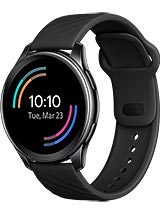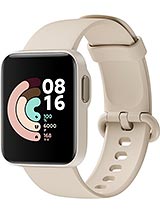Tested! Redmi K20 Pro VS OnePlus 7: Performance and Gaming Comparison By Digit
While, the flagship, Snapdragon 855 ensures smooth and good performance throughout, beat your long gaming sessions or your daily tasks. The question remains, which is the fastest phone? Is it the newly launched red-meat k20 pro or is it the one plus seven? Both are priced really affordably the Redmi k20 pro a little cheaper than the one plus seven, and today we're going to do a performance test and a gaming test between these two phones to find out which is the fastest, so watch on. So before we begin, let's quickly go through the spec sheet of the two phones on the replicate 20 probes, you get an edge to edge, display that stretches to 6.39 inches diagonally. It's an AMOLED panel with HD art support and the full screen is enabled simply because of the pop-up camera on the front which pops up and houses the front camera and helps you increase, unlock and taking selfies. So one plus seven, on the other hand, sports a more traditional design. You will instantly recognize the drop notch on this one, as this was more or less the same design.
That was there on the 1 plus 60. Now, apart from that, there is the fabric made 55 on both devices and both the devices also come with a GB, RAM and 250 GB of storage. An interesting thing to note here is the one plus sevens: storage is UFS 3.0, while the red McKay 20 pro, has u FS 2.1. That means the 1 + 7 s. Input/Output speeds for its storage is much faster than what the red McKay 20 pro offers.
Now, apart from that, both phones have nearly the same battery capacity. The red McKay 20 pro has 4000 my, while the 1 + 7 pro has 3,700 my. Apart from that, there's a dual camera stacked on the back with 48 MPG and a 5mp down below, while on the red, McKay 20 pro it's a 48 MP sensor again, but then there's an 8 megapixel telephoto sensor at a 13 megapixel ultra-wide sensor as well. So there's a lot more flexibility, but we'll look into the photography capacity of both the phones in another video. Today we're just focusing on how the phones perform in real life and on benchmarks.
So without any ado, let's begin, as you can see, both phones are pretty evenly matched the hardware inside both the phones are pretty identical. You have the same processor, ram, storage and everything else. What's what will really affect your experience of using these? Two phones are the software that they run on now. Both of them are on Android 9pi, but they're on different custom operating systems. The OnePlus 7 runs on oxygen, OS 9, which has been touted as one of the best custom operating systems based on Android, it's minimally, aesthetic very fast and has all the deep-seated optimizations that make the one-plus phones run like a beast.
The Redmi Note 7 pro is no slouch also. It runs on me UI 10, which is again based on android 9pi, but it's slightly different from other me UI phones that you have seen for one. It has an app drawer where you can get like all your apps in one place and more than that, the abroad also divided into multiple sections, so you can get. You can like to reach your app pretty quickly. There are other deep-seated optimizations as well, including a new game mode, which is called game turbo where it houses all your games in one place, and you can change and tweak around with the settings and all your different modes while gaming as well.
Now, that's about it! That's what the software of the two phones, that's, how they differ. Now that we have both the hardware and software explained, let's quickly jump to the tests. The first test that we do is benchmark analysis. We run a host of benchmark apps on both the phones and see how these two phones fail in such synthetic scenarios by comparing the score said each one of them achieves the results are overlaid on your screen, and you can see the red McGee.20 blue is ahead of the OnePlus 7 on an tutu on geek bench, single, core and multi-core. Also, the red Big K 20 pro is ahead of the 1 + 7, but only by ahead.
As far as mobile expert, 2015 and PC mark 2.0 is concerned, the 1 + 7 edges out the red week, K 20 Pro, and which is very interesting to note because these two benchmarks, when they run they actually perform the same real-world tasks that you would be doing on your phone while you're using it on GPU benchmarks, the 1 + 7 race, past the red BK 20 pro by a long mile. The same result is reflected in on GFX men's scores as well and based on our analysis. The 1 / 7 seems to be a good phone for gaming. Its GPU performs much better than the red Mackay 20 pro, even though both of them have the same hardware. So I'll presume it's off we're doing the trickery on the one plus seven, while the red, BK, 20 Pro, seems to be perfect at handling all your CP related tasks, we're moving to get a higher score on Geek bench and that gets reflected in an tutu.
You mean you know that the red make a 20 pro has been optimized really well, which is the reason why it's getting such high scores under test. The real-world usage, we can't just rely on how the benchmark scores fit the two phones against each other. We have to look at other things and what best to do other than to game on these two phones, both of them have monstrous power inside and the Redmi k20 pro and the OnePlus 7, with the Adrian 640 GPU and all the CPU trickery they're slamming 8:55 brings on the table how they perform a while gaming now to see how the phones perform in the real world. We can't just rely on synthetic benchmarks. Can we mean that's not what you're going to be doing every day? If you buy the one of these phones, so we did the next best thing.
We stopped. We loaded up a few games, and we played like 15-minute sessions of each of the game on the two phones and saw how the two phones performed now. Unfortunately, game bench did not run on the red McGee 20 pro, so we had to make do with the in-game FPS counter that the phone provides. The OnePlus 7, however, was hooked up to game bench, and we have the metrics for the 1 + 7. On top of that, we also used our heat gun to measure the temperature after every session, to see whether the phones are heating up too much, whether it's going to be very uncomfortable, while playing and all those things on, fob, G mobile, with the new ultra frame rate option put the 1, + 7 and the red McGee 20 pro hit the 60 FPS mark and the red Mackay 20 pro also brings some new optimizations in place that make the game run in more visually, enriching way.
The 1 + 7 has no such a special optimization for baby mobile, but it does have the fanatic gaming mode and that did optimize the gameplay quite a lot and both of them ran without any hitch whatsoever on Shadow gun legends, the k20 pro hit 60 FPS with ease, but the 1 + 7 struggled a bit and managed to hit around 5354 most of the time. Now we tried infinity ops, the next and that to manage to hit 60fps on both the phones, the 1 + 7 and the k20 pro with relative ease. What was interesting to note was that the 1 plus 7 and the k20 probe both heated up quite a lot, and it was almost impossible to play without the keys on after 15 minutes. Now you can see the thermal metrics that is overlaid on your screen and the red McGee 20 probe managed to touch 40 degrees almost every time that we tried to play the game even after giving it a period of cooldown. The 1 plus 7 also touched 40 degrees and above on two instances, but while playing infinity ops, the temperature stayed below 39 degrees, alright, so far, there's no choosing between the two phones.
We saw on benchmarks. The two phones are pretty neck to neck and same is the case while gaming. So we checked our one thing that probably will give us the final answer as to which is the fastest phone. It's an age-old test. We chose 5 apps and launched them back to back and saw just how fast both these phones could open them using a stopwatch.
The time that both the phones took is has been overlaid on your display, and you can see that the 1 plus 7 is actually ahead of the red McKay 20 probed by a few milliseconds, the red Mackay 20 Pro, and the 1 plus 7 both completed the task in around 12 seconds, but the 1 + 7 actually took a little less time than the red McGee 20 Pro, so based on all the tests that we performed, there's really nothing separating the great big K 20 Pro and the 1 + 7 save for the price of the K 20 Pro, which is slightly lower than the 1 + 7. Now we saw on benchmarks both of them were pretty neck to neck, with only 3d mark and the answer to score being a big differentiator on gaming, both phones managed to touch 60 FPS on games that support 60 fps and that ? pretty good. The thermals on a 1 / 7 is actually it'll better than the red BK 20. Pro, but if we really had to pick a winner based solely on pure performance, it would be really unfair for both the phones. As a matter of fact, we're going to call this a tie, unlike what happened on Sunday in the Cricket World Cup final, where New Zealand had to lose out against England, despite both the teams being neck to neck.
So we're not going to do that. We don't have any such rules, so we're going to call these two phones, a tie, at least based on performance. We're gonna look into the camera performance of both the phones in another video very soon, maybe this week, so yeah stay tuned, two digit dots in and let us know what you guys thought of this comparison, video in the comment section below and for more videos like this state university dot dean. Thank you for the latest. Technology updates subscribe to digit, --an and don't forget to hit the bell icon.
Source : Digit




![Mi Mix 4 VS Mi 11 Ultra Camera Comparison [English]](https://img.youtube.com/vi/_iQLf_KzmBM/maxresdefault.jpg )





















